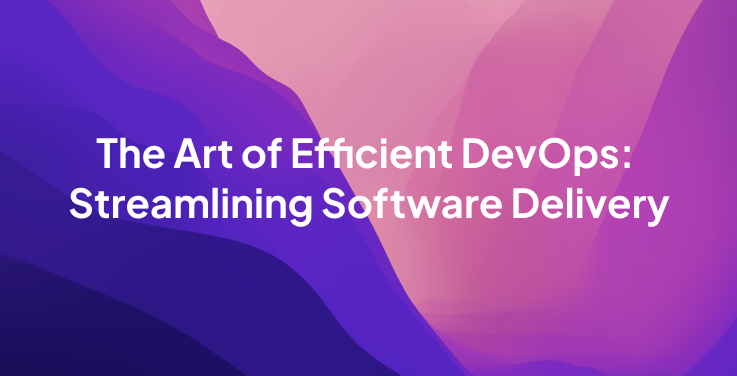The Art of Efficient DevOps: Streamlining Software Delivery
In today’s digital age, where competition is fierce and the demand for rapid software delivery is unrelenting, businesses must harness the power of efficient software delivery to stay ahead. In this blog post, we embark on a journey into the world of DevOps, an artful methodology that bridges the gap between development and operations, revolutionizing the way software is deployed while maintaining unwavering quality.
What is DevOps?
At its core, DevOps is a philosophy and set of practices that unifies software development (Dev) and IT operations (Ops). It breaks down the traditional silos between these two realms, fostering a collaborative culture that prioritizes automation, efficiency, and continuous improvement.
DevOps isn’t just a set of tools or a single process—it’s a holistic approach that reshapes the way software is conceived, built, tested, and delivered. By dismantling the barriers between development and operations teams, DevOps empowers organizations to respond to market changes with agility and precision.
The Benefits of DevOps
The advantages of DevOps are tangible and transformative:
- Faster Time-to-Market: DevOps enables organizations to release software updates and new features at a remarkable pace. This rapid delivery keeps businesses ahead of the competition and empowers them to meet evolving customer demands.
- Improved Quality: Automation and continuous testing are at the heart of DevOps. As a result, software quality is enhanced, reducing the likelihood of bugs and vulnerabilities in production.
- Cost Reduction: DevOps isn’t just about speed—it’s also about efficiency. By automating repetitive tasks and optimizing resource utilization, DevOps helps reduce operational costs.
Real-world examples abound, with industry giants like Amazon, Netflix, and Etsy demonstrating how DevOps can drive innovation and competitiveness.
DevOps Tools and Technologies
DevOps relies on a suite of tools and technologies designed to automate, streamline, and enhance software delivery. These include:
- Continuous Integration (CI): Tools like Jenkins and Travis CI automatically build, test, and integrate code changes, ensuring that new code doesn’t break existing functionality.
- Continuous Delivery (CD): CD tools, such as Ansible and Puppet, automate the deployment of software to various environments, from development to production.
- Containerization: Docker and Kubernetes provide containerization solutions, allowing for consistent deployment across different environments and platforms.
- Orchestration: Tools like Docker Swarm and Kubernetes orchestrate container deployment, scaling, and management.
Best Practices
Implementing DevOps effectively involves adhering to best practices:
- Version Control: Employ robust version control systems like Git to track code changes and enable collaboration.
- Automated Testing: Implement automated testing at every stage of development to maintain code quality.
- Infrastructure as Code (IAC): Describe infrastructure configurations as code to enable automated provisioning and scaling of resources.
- Monitoring and Feedback: Continuously monitor application and infrastructure performance to identify issues early, allowing for prompt resolution.
DevOps Challenges
While DevOps offers immense benefits, adopting it can be challenging:
- Cultural Resistance: Overcoming cultural resistance within an organization can be one of the most significant challenges. DevOps requires a shift in mindset and a commitment to collaboration.
- Tool Selection: Choosing the right DevOps tools can be daunting. Organizations must select tools that align with their goals and requirements.
Conclusion
Efficient DevOps practices aren’t just a technical solution; they’re a cultural and strategic shift that empowers businesses to meet the ever-evolving demands of the digital age. By embracing the principles, benefits, tools, and best practices of DevOps, organizations can transform software delivery into a dynamic, responsive, and competitive advantage. It’s an artful journey that pays dividends in today’s fast-paced world of technology.





